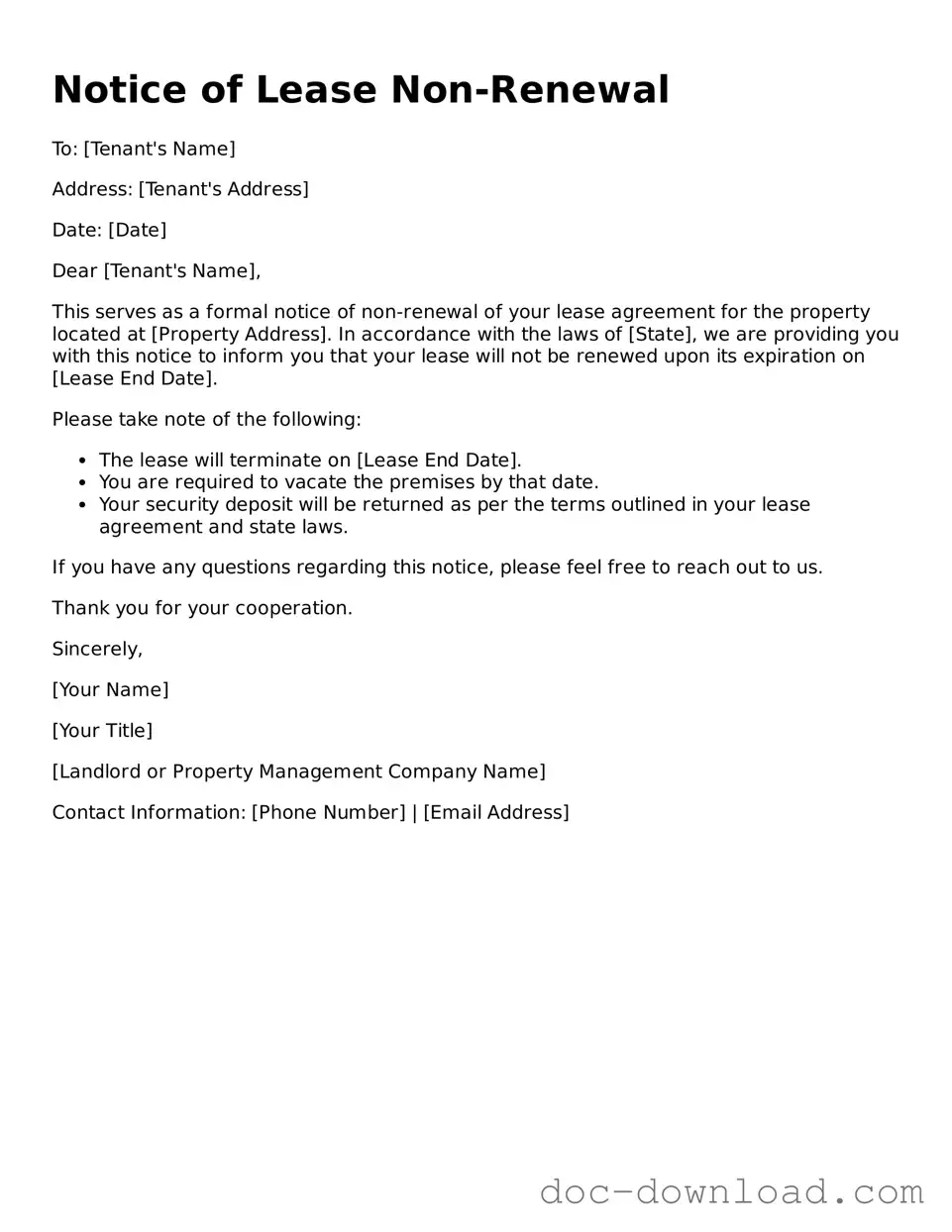The Notice of Lease Non-Renewal form is akin to the Lease Termination Letter. Both documents serve the purpose of formally notifying a tenant or landlord that a lease agreement will not continue beyond its expiration date. The Lease Termination Letter typically provides a clear date for when the lease will end and may outline any responsibilities regarding the return of security deposits or the condition of the property upon vacating.
Another similar document is the Eviction Notice. While the Notice of Lease Non-Renewal indicates an intention not to extend the lease, an Eviction Notice is a more urgent communication that requires a tenant to vacate the property due to lease violations or failure to pay rent. Both documents require clear communication and a specified timeline for compliance, but the Eviction Notice often involves more immediate legal consequences.
The Rental Agreement Addendum is also comparable. This document modifies the original lease terms, potentially altering the renewal conditions. While the Notice of Lease Non-Renewal communicates the decision not to renew, an Addendum may provide new terms that could affect the decision to continue the lease. Both documents need to be clear and agreed upon by both parties to avoid misunderstandings.
In the context of lease agreements, understanding the various documents involved is crucial for both landlords and tenants. One important resource for ensuring that all terms are legally defined and agreed upon is the Illinois Lease Agreement form. For more detailed guidance, you can refer to Illinois Forms, which provide comprehensive resources to aid in navigating the complexities of lease agreements and their associated documents.
Additionally, the Notice to Quit bears resemblance to the Notice of Lease Non-Renewal. This document is often issued when a tenant has violated lease terms, requiring them to vacate the property. Like the Non-Renewal notice, it specifies a timeframe for the tenant to leave, but it usually arises from a breach rather than a mutual decision not to renew.
The Move-Out Notice is another relevant document. This form is typically used by tenants to inform landlords of their intent to vacate the premises. Similar to the Notice of Lease Non-Renewal, it establishes a timeline for moving out and may include information about the return of the security deposit. Both documents aim to ensure a smooth transition at the end of a lease term.
The Rent Increase Notice also shares similarities with the Notice of Lease Non-Renewal. While the latter indicates the end of a lease, a Rent Increase Notice informs tenants of a change in rental terms, which may influence their decision to renew the lease. Both documents require timely delivery and adherence to local laws regarding notification periods.
The Lease Renewal Agreement is another document that contrasts with the Notice of Lease Non-Renewal. This agreement signifies both parties’ intent to extend the lease under potentially new terms. While the Non-Renewal notice indicates a lack of continuation, the Renewal Agreement is a proactive step to ensure the lease persists, highlighting the importance of clear communication between landlords and tenants.
The Sublease Agreement is also relevant. This document allows a tenant to rent out their leased property to another party. While it does not directly relate to lease non-renewal, it can be utilized when a tenant chooses not to renew their lease but wants to transfer their rights to another individual. Both documents require careful attention to the original lease terms to avoid conflicts.
Lastly, the Landlord’s Notice of Intent to Sell is similar in that it communicates a significant change regarding the property. This notice informs tenants that the property will be sold, which may lead to a decision not to renew the lease. Both documents necessitate clear communication regarding future occupancy and the tenant's rights.
